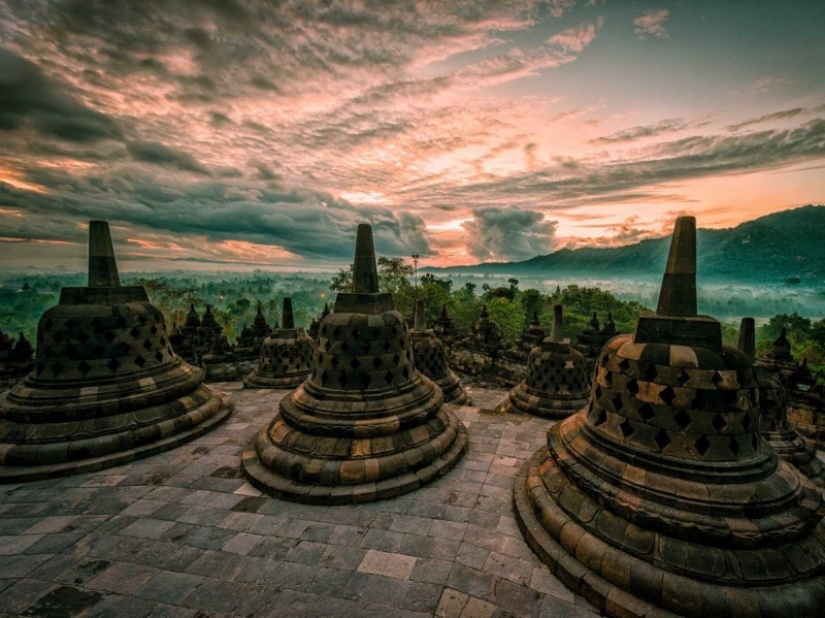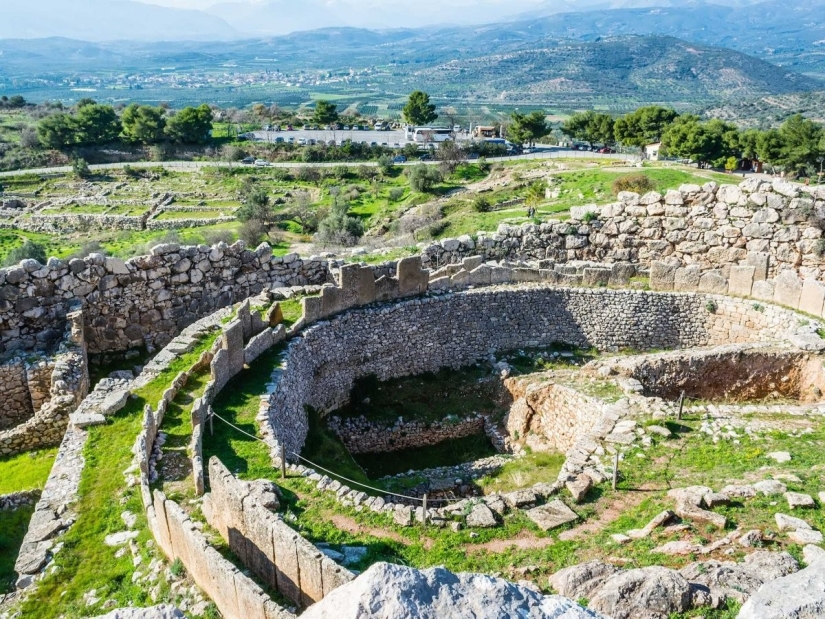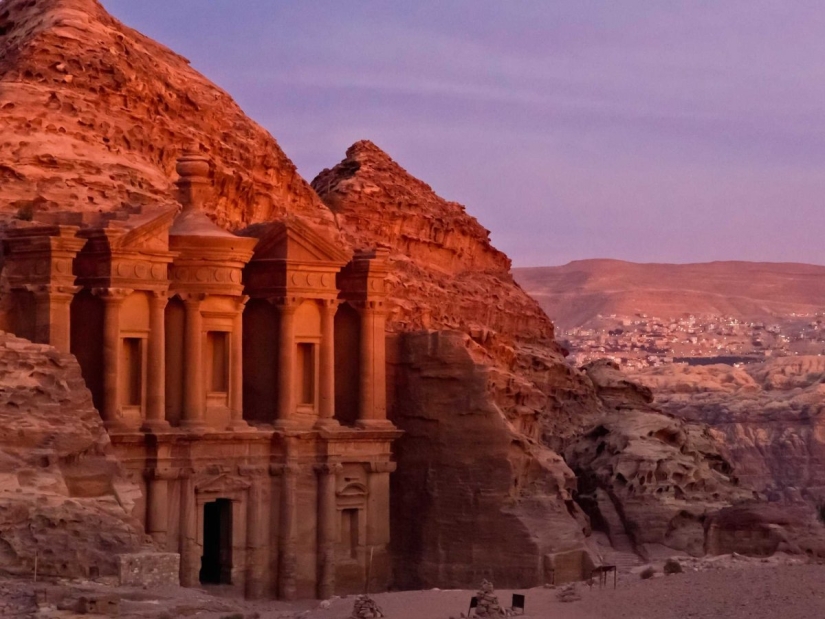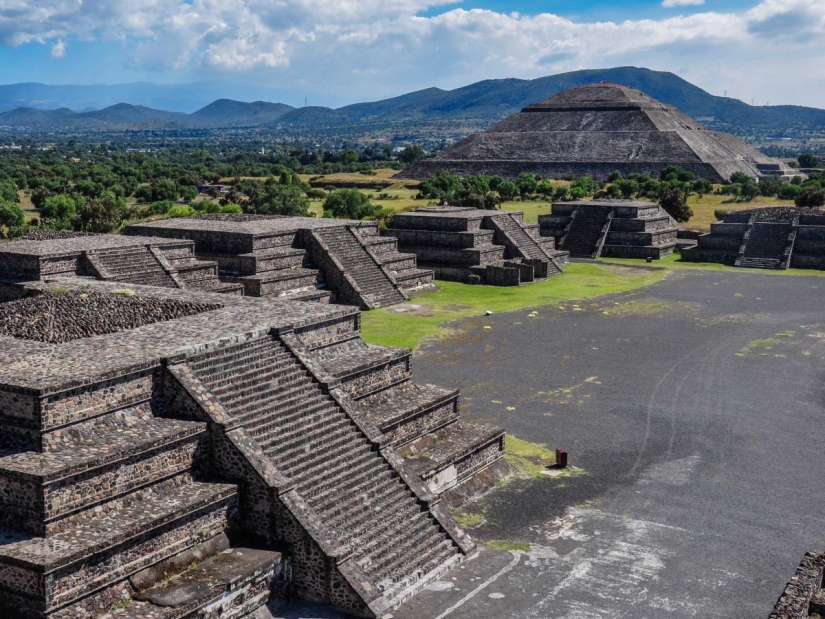26 stunning ancient ruins that are definitely worth seeing
Categories: World
By Pictolic https://pictolic.com/article/26-stunning-ancient-ruins-that-are-definitely-worth-seeing.htmlThe fact that ancient monuments built hundreds or even thousands of years ago are still standing may seem incredible. To get to such a place is like taking a trip through time. Many would like to see what life was like here many, many years ago. From Roman baths in Britain to Ajanta caves in India — we have collected for you 26 majestic ancient ruins that are definitely worth seeing.

 Machu Picchu in Peru dates back to the 15th-16th century. Once there was a religious place sacred to all Incas, a haven of Inca leaders.
Machu Picchu in Peru dates back to the 15th-16th century. Once there was a religious place sacred to all Incas, a haven of Inca leaders.
On the territory of Machu Picchu there are more than 150 stone buildings with more than 3000 steps. Despite its colossal size, Machu Picchu was discovered only in 1911. For many years, the holy city was lost after the Spanish conquistadors destroyed the Inca civilization.
 Pompeii was a thriving ancient Roman city located near modern Naples. But in 79 AD, after the eruption of Mount Vesuvius, the city was buried under ashes. As a result of the eruption, 2,000 people died. But the city itself remained untouched under layers of ash until 1748, when it was discovered as a result of excavations.
Pompeii was a thriving ancient Roman city located near modern Naples. But in 79 AD, after the eruption of Mount Vesuvius, the city was buried under ashes. As a result of the eruption, 2,000 people died. But the city itself remained untouched under layers of ash until 1748, when it was discovered as a result of excavations.
 Every year, the legendary Stonehenge attracts more than a million tourists. This world-famous megalithic structure consists of about a hundred mysterious boulders standing in a circle. According to the latest research based on radiocarbon analysis, our ancestors from the Neolithic erected this mysterious monument for about 1500 years.
Every year, the legendary Stonehenge attracts more than a million tourists. This world-famous megalithic structure consists of about a hundred mysterious boulders standing in a circle. According to the latest research based on radiocarbon analysis, our ancestors from the Neolithic erected this mysterious monument for about 1500 years.
 The sacred place of Chichen Itza in the Mexican city of Tinum has a rich 1000-year history and the title of one of the main centers of the ancient Maya on the Yucatan peninsula. The first human settlement on this site dates back to 415-455 AD .
The sacred place of Chichen Itza in the Mexican city of Tinum has a rich 1000-year history and the title of one of the main centers of the ancient Maya on the Yucatan peninsula. The first human settlement on this site dates back to 415-455 AD .
 Angkor in Siem Reap, Cambodia, occupies more territory than all five districts of New York (more than 600 square kilometers). In the 9th-15th centuries, numerous capitals of the Khmer Empire were located here. The 12th-century Angkor Wat Temple is one of the most revered in Cambodia. It is even present on the flag of the country.
Angkor in Siem Reap, Cambodia, occupies more territory than all five districts of New York (more than 600 square kilometers). In the 9th-15th centuries, numerous capitals of the Khmer Empire were located here. The 12th-century Angkor Wat Temple is one of the most revered in Cambodia. It is even present on the flag of the country.
 The place where the famous gladiatorial fights were held — the Roman Colosseum — was built in 70-72 AD. It was erected by order of Emperor Vespasian as a gift to the Roman people, who were hungry for "bread and circuses."
The place where the famous gladiatorial fights were held — the Roman Colosseum — was built in 70-72 AD. It was erected by order of Emperor Vespasian as a gift to the Roman people, who were hungry for "bread and circuses."
 Although the first human settlements on the territory of the Greek city of Mycenae date back to the beginning and middle of the Bronze Age, this particular palace dates back to the 14th century. Many artifacts and works of art have been found in the tombs of Mycenae.
Although the first human settlements on the territory of the Greek city of Mycenae date back to the beginning and middle of the Bronze Age, this particular palace dates back to the 14th century. Many artifacts and works of art have been found in the tombs of Mycenae.
 Easter Island is located 3,700 km from the west coast of Chile. Here, near the Rano-Raraku volcano, there are mysterious moai idols. They are 900 stone statues, 13 tons each, scattered throughout the island. The purpose of their creation is still unknown.
Easter Island is located 3,700 km from the west coast of Chile. Here, near the Rano-Raraku volcano, there are mysterious moai idols. They are 900 stone statues, 13 tons each, scattered throughout the island. The purpose of their creation is still unknown.
 The Hittite empire was once based in the fabulous city of Cappadocia in modern Turkey. At the same time, the history of this region goes back to the 6th century BC. The unique light pipes of Cappadocia served as foundations for both residential buildings and temples.
The Hittite empire was once based in the fabulous city of Cappadocia in modern Turkey. At the same time, the history of this region goes back to the 6th century BC. The unique light pipes of Cappadocia served as foundations for both residential buildings and temples.
 Between the Red and Dead Seas in Jordan is Petra. This place in prehistoric times connected Arabia, Egypt and Syria-Phoenicia. Surrounded by mountains and carved into an amazing red rock, this ancient city is truly unique.
Between the Red and Dead Seas in Jordan is Petra. This place in prehistoric times connected Arabia, Egypt and Syria-Phoenicia. Surrounded by mountains and carved into an amazing red rock, this ancient city is truly unique.
 One of the most popular tourist attractions in the UK is the Roman baths in the English city of Bath. Baths were an integral part of the daily bathing ritual of the ancient Romans. In addition to visiting the baths, tourists can take a tour of the tunnels laid under them.
One of the most popular tourist attractions in the UK is the Roman baths in the English city of Bath. Baths were an integral part of the daily bathing ritual of the ancient Romans. In addition to visiting the baths, tourists can take a tour of the tunnels laid under them.
 In different eras in the Turkish city of Ephesus there were several empires — Greek, Persian, Roman, Byzantine and Ottoman. During its heyday in the 2nd century AD, almost 300,000 people lived in the city. Today, you can still see several columns left over from the temple of the goddess Artemis - one of the seven oldest wonders of the world.
In different eras in the Turkish city of Ephesus there were several empires — Greek, Persian, Roman, Byzantine and Ottoman. During its heyday in the 2nd century AD, almost 300,000 people lived in the city. Today, you can still see several columns left over from the temple of the goddess Artemis - one of the seven oldest wonders of the world.
 Thirty-four monasteries and temples built into the basalt rock wall make up the Ellora Caves in the Indian state of Maharashtra. This impressive temple complex dates back to 600-1000 AD and is a sacred place for people professing Buddhism, Hinduism and Jainism.
Thirty-four monasteries and temples built into the basalt rock wall make up the Ellora Caves in the Indian state of Maharashtra. This impressive temple complex dates back to 600-1000 AD and is a sacred place for people professing Buddhism, Hinduism and Jainism.
 Not far from Mexico City is the holy city of Teotihuacan, which houses colossal monuments such as the temple of Quetzalcoatl and the pyramids of the Sun and Moon. It is not surprising that the name of the city translates as "the place where the gods were created."
Not far from Mexico City is the holy city of Teotihuacan, which houses colossal monuments such as the temple of Quetzalcoatl and the pyramids of the Sun and Moon. It is not surprising that the name of the city translates as "the place where the gods were created."
 The three pyramids of Giza, standing on the banks of the Nile in Northern Egypt, are named after the three pharaohs for whom they were built: Cheops, Khafra and Menkaura. The pyramids date back to the 4th Dynasty (circa 2575-2465 BC).
The three pyramids of Giza, standing on the banks of the Nile in Northern Egypt, are named after the three pharaohs for whom they were built: Cheops, Khafra and Menkaura. The pyramids date back to the 4th Dynasty (circa 2575-2465 BC).
 At the very beginning, in the 7th century BC, an Etruscan cemetery was located on the territory of the complex, which is now known as the Roman Forum. As a result, this place became the social, commercial and political center of the Roman Empire.
At the very beginning, in the 7th century BC, an Etruscan cemetery was located on the territory of the complex, which is now known as the Roman Forum. As a result, this place became the social, commercial and political center of the Roman Empire.
 Buddhist monuments in Ajanta caves in the Indian state of Maharashtra were built in the 1st-2nd century BC. There are 29 caves in total, five of them were temples, and 24 were monasteries.
Buddhist monuments in Ajanta caves in the Indian state of Maharashtra were built in the 1st-2nd century BC. There are 29 caves in total, five of them were temples, and 24 were monasteries.
 Some of the best preserved rock settlements in the United States are located in the Messa Verde National Park in Colorado. In 600-1300 AD, a tribe of Pueblo Indians lived here.
Some of the best preserved rock settlements in the United States are located in the Messa Verde National Park in Colorado. In 600-1300 AD, a tribe of Pueblo Indians lived here.
 The Longmen Temple complex is located in the Chinese province of Henan and includes over 2,300 caves and niches carved into limestone rocks, stretching more than a kilometer. The statues in the caves and the inscriptions on them make up the largest collection of works of art from the Wei and Tang dynasties.
The Longmen Temple complex is located in the Chinese province of Henan and includes over 2,300 caves and niches carved into limestone rocks, stretching more than a kilometer. The statues in the caves and the inscriptions on them make up the largest collection of works of art from the Wei and Tang dynasties.
 The temple city of Bagan in Myanmar occupies a whole 41 square kilometers and includes about 2,000 monuments. In the 9th century, Bagan served as a central place in Burma, which King Anoratha united with the help of Theravada Buddhism.
The temple city of Bagan in Myanmar occupies a whole 41 square kilometers and includes about 2,000 monuments. In the 9th century, Bagan served as a central place in Burma, which King Anoratha united with the help of Theravada Buddhism.
 Hadrian's Wall is a defensive fortification, which is the largest structure left over from the ancient Romans in the UK. The wall stretches for 128 km and in some places reaches a height of 6 meters. It was built by 1,500 workers in just six years — an incredible engineering achievement.
Hadrian's Wall is a defensive fortification, which is the largest structure left over from the ancient Romans in the UK. The wall stretches for 128 km and in some places reaches a height of 6 meters. It was built by 1,500 workers in just six years — an incredible engineering achievement.
 In Tulum, located on the Yucatan Peninsula in Mexico, there are not only amazing beaches, places for snorkeling and diving, but also impressive ruins of ancient Maya dating back to 564 A.D. In the Yucatecan language, "Tulum" means "wall" — once this settlement was surrounded by a huge barricade.
In Tulum, located on the Yucatan Peninsula in Mexico, there are not only amazing beaches, places for snorkeling and diving, but also impressive ruins of ancient Maya dating back to 564 A.D. In the Yucatecan language, "Tulum" means "wall" — once this settlement was surrounded by a huge barricade.
 In Central Java, Indonesia, there is a Buddhist temple Borobudur, built in the 8th-9th centuries. The temple complex was built in three tiers and includes 72 Buddhist statues.
In Central Java, Indonesia, there is a Buddhist temple Borobudur, built in the 8th-9th centuries. The temple complex was built in three tiers and includes 72 Buddhist statues.
 The Great Wall of China definitely deserves its name. The construction of the wall began in the 3rd century BC, but the most famous and well-preserved part of it was built in the period from the 14th to the 17th century AD. The wall protected the Chinese Empire from foreign invaders.
The Great Wall of China definitely deserves its name. The construction of the wall began in the 3rd century BC, but the most famous and well-preserved part of it was built in the period from the 14th to the 17th century AD. The wall protected the Chinese Empire from foreign invaders.
 Located on the shores of the Gulf of Tunis, Carthage was founded in the 9th century BC. A successful trading empire and civilization was born and flourished here until the Romans destroyed it in 146 BC. Then a new one was built on the ruins of the first Carthage.
Located on the shores of the Gulf of Tunis, Carthage was founded in the 9th century BC. A successful trading empire and civilization was born and flourished here until the Romans destroyed it in 146 BC. Then a new one was built on the ruins of the first Carthage.
 Diocletian's Palace was built between the 3rd and 4th centuries BC in the city of Split, on the territory of modern Croatia. The ruins of the palace can still be found throughout the central part of the city.
Diocletian's Palace was built between the 3rd and 4th centuries BC in the city of Split, on the territory of modern Croatia. The ruins of the palace can still be found throughout the central part of the city.
Recent articles

Leonardo da Vinci was accused of being fond of orgies. William the Conqueror, despite all his successes, was called a "Bastard" ...

Modesty? Decency? A sense of tact? No, you haven't heard! Just look at what the people from the selection below are doing! No ...

American documentary photographer Bruce Davidson came to the UK in 1960 for a couple of months on the assignment of Queen magazine. ...